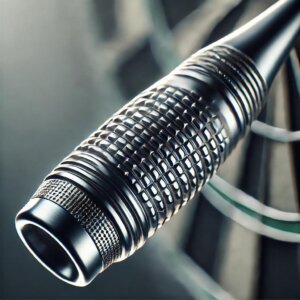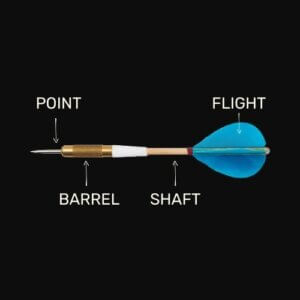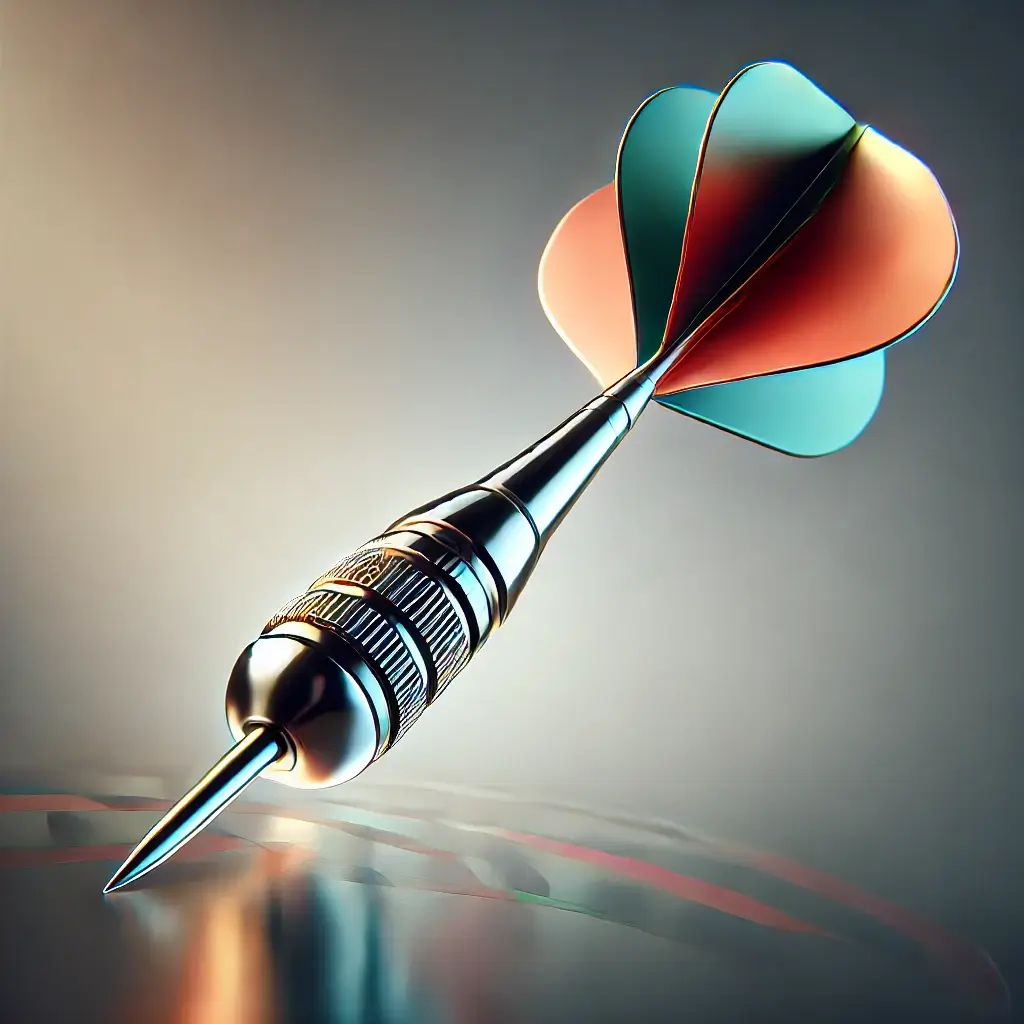Darts is a game of precision, skill, and strategy, but understanding the components of the dart itself is essential to mastering the game. Each part of a dart plays a critical role in its performance, and knowing these parts can help you make informed choices when selecting or customizing your darts. In this guide, we’ll break down the parts of a dart, explaining what they are called and how they contribute to the overall function and performance of the dart.
For more tips on improving your dart game, check out our other guides: 3 Simple Strategies for Winning at Darts and Dartboard Maintenance Tips: Keep Your Game On Point.
The Basic Parts of a Dart
The Tip (Point)
The tip, also known as the point, is the frontmost part of a dart and is the section that penetrates the dartboard. Tips can be either steel or soft plastic, depending on whether you’re playing on a traditional bristle board or an electronic dartboard. Steel tips are sharp and durable, ideal for traditional boards, while plastic tips are safer and required for electronic boards. The choice of tip greatly affects how the dart sticks to the board, impacting your scoring consistency.
Types of Tips
There are several types of dart tips available, including fixed points, movable points, and retractable points. Fixed points are the most common, while movable and retractable points help reduce bounce-outs by retracting slightly upon impact.
The Barrel

The barrel is the main body of the dart and is typically made from materials such as brass, tungsten, or nickel-silver. The barrel is where most of the dart’s weight is concentrated, and it also serves as the grip area. The design of the barrel, including its shape, knurling (textured patterns), and weight, is crucial in determining how comfortable and effective the dart is for individual players.
Choosing the Right Barrel
When selecting a barrel, consider the material and weight that best suits your throwing style. Tungsten barrels are popular among professionals due to their high density, allowing for slimmer darts that can be grouped tightly on the board. Brass barrels are less expensive and great for beginners.
The Shaft (Stem)
What Is the Shaft?
The shaft, also known as the stem, connects the barrel to the flight and is responsible for the dart’s balance and stability in flight. Shafts come in various lengths and materials, including plastic, aluminum, and carbon fiber. The length and material of the shaft can significantly affect the dart’s performance and the player’s throwing style.
Types of Shafts
Shafts can be categorized into short, medium, and long, with each length providing a different flight path. Shorter shafts are better for faster, more direct throws, while longer shafts offer a more stable flight. Additionally, shafts can feature different designs, such as spinning shafts that reduce deflections when darts collide on the board.
Replacing and Customizing Shafts
Shafts are one of the most customizable parts of a dart. Players often experiment with different shaft lengths and materials to find the combination that best suits their style. It’s also common to replace shafts periodically as they can wear out or break during play.

The Flight
The Function of the Flight
The flight is the rear part of the dart and plays a crucial role in stabilizing the dart during its flight. Flights come in various shapes, sizes, and materials, each affecting the dart’s aerodynamics. The most common flight shapes include standard, slim, pear, and kite, each offering different levels of drag and stability.
Choosing the Right Flight
Selecting the right flight depends on your throwing style and the type of dart you use. Standard flights provide the most stability and are ideal for slower, more deliberate throws. Slim flights offer less drag and are suitable for faster, more direct throws. Experimenting with different flight shapes and materials, such as nylon or polyester, can help you find the optimal setup for your game.
Attaching and Replacing Flights
Flights are attached to the shaft using a slot at the end of the shaft. It’s important to ensure that flights are fully opened when attached, as this maximizes their stabilizing effect. Over time, flights can become damaged or worn, and replacing them regularly is essential to maintain consistent performance.
Additional Components and Accessories
O-Rings
O-rings are small rubber rings placed between the barrel and the shaft. Their purpose is to keep the shaft tightly screwed into the barrel, preventing it from loosening during play. O-rings are an inexpensive but valuable accessory, especially if you find that your shafts frequently come loose.
Point Protectors
Point protectors are small plastic covers that fit over the tip of the dart. They are used to protect the points from damage when not in use and to prevent accidental injury. Point protectors are especially useful if you transport your darts frequently.
Weight Add-Ons
Some players prefer to adjust the weight of their darts by adding small weight rings or washers between the barrel and the shaft. This customization allows players to fine-tune the balance and feel of their darts to better match their throwing style.
Maintaining Your Darts
Regular Maintenance Tips
To ensure the longevity and performance of your darts, it’s important to maintain them regularly. This includes checking the tips for sharpness, inspecting the barrels for wear, and replacing worn-out shafts and flights. Keeping your darts clean and storing them properly when not in use will also help maintain their performance.
Storage Solutions
Proper storage is key to preserving the condition of your darts. Consider using a dart case to protect your darts from damage during transport. Dart cases come in various sizes and materials, from simple plastic tubes to padded cases that can hold multiple sets of darts and accessories.
Conclusion: Understanding the Parts of a Dart
Understanding the parts of a dart is essential for any player looking to improve their game. Each component, from the tip to the flight, plays a critical role in the dart’s performance. By knowing what these parts are called and how they function, you can make informed decisions when selecting or customizing your darts to suit your playing style.
Whether you’re just starting or looking to refine your technique, understanding the parts of a dart will give you a deeper appreciation of the game and help you achieve better results on the board. For further reading on how to optimize your darts and improve your game, be sure to visit our articles on Dartboard Maintenance Tips and How to Make Darts Fly Straight.

